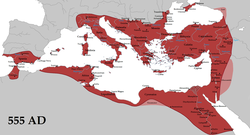|
The Last Offensive - Charles B. MacDonald |

![]()
![]()
![]()
![]()
![]()
- By Nick-D
The Last Offensive is one of the books in the vast United States Army in World War II official history series, and covers the US Army's role during the invasion of Germany in 1945. Its author, Charles B. MacDonald, served as a junior officer in this campaign before becoming a distinguished military historian.
Why read and review a 46-year-old official history volume? In short, because the series and the book still matter. The "Green Books" have generally stood the test of time, and remain key references. This is especially the case for campaigns like this one, which few subsequent works have comprehensively covered.
The Last Offensive is a good example of the virtues of this series. MacDonald was given the daunting task of covering the activities of two army groups over a period of about six months during which time they conducted a vast range of activities. He handles this with aplomb, and the book provides a detailed yet readable account of this massive campaign. The narrative is generally focused on Army to divisional level plans and actions, but MacDonald illustrates them with well chosen accounts from much lower levels. This includes interesting vignettes of battles and the experiences of individual soldiers. At times this is even played for laughs, with MacDonald's account of the first meeting between US Army and Red Army combat units reading like slapstick. The book is well illustrated with excellent maps and well-selected photos. It also includes detailed and very useful coverage of the German Army, which makes it clear just how wretched and dysfunctional it was by the end of the war. The coverage of logistical matters is limited compared to most books in the series, but this is understandable given the scope of the narrative and the existence of specialised volumes covering the topic.
That said, The Last Offensive also illustrates some of the limitations of the Green Books. Like most official history volumes, the narrative can be overly sympathetic towards senior officers and often avoids naming those who were relieved of command (a practice the US Army aggressively engaged in during the war). Given that this was a coalition war where inter-service cooperation was vital for success, it is probably too focused on the activities of the US Army as even the supporting USAAF activities are only sketchily described. MacDonald's criticism of the French First Army's commander isn't entirely convincing, though his treatment of British officers is very fair. Probably the worst passage in the book though is the dismissive treatment of the large-scale rapes which occurred in Stuttgart after its capture, MacDonald airily implying that 2,000 cases of rape by freed slave labourers and French troops were not particularly serious: such an attitude is clearly not acceptable, and more modern histories provide better balanced accounts.
Overall, The Last Offensive is an impressive book, and an excellent example of how to write a large-scale campaign narrative.
Publishing details MacDonald, Charles B. (1972). The Last Offensive. Washington, D.C.: US Government Printing Office. ISBN 9780160019227.
Recent external reviews |

Heather, Peter (2018). Rome Resurgent: War and Empire in the Age of Justinian. Oxford: Oxford University Press. ISBN 9780199362745.
- King, Matthew (July 2018). "Review of Heather, Peter, Rome Resurgent: War and Empire in the Age of Justinian". H-War, H-Net Reviews.
Satia, Priya (2018). Empire of Guns: The Violent Making of the Industrial Revolution. London: Penguin. ISBN 9780735221864.
- Griffin, Emma (13 July 2018). "Empire of Guns by Priya Satia – how war drove the industrial revolution". The Guardian.
Cochrane, Peter (2018). Best We Forget: The War for White Australia, 1914–18. Melbourne: Text Publishing. ISBN 9781925603750.
- Fitzgerald, Ross (4 August 2018). "Best We Forget: The War for White Australia, 1914-18: Peter Cochrane". The Australian.
Various books
- Barno, David; Bensahel, Nora. "Strategic Outpost's Third Annual Summer Vacation Reading List". War on the Rocks.
|

